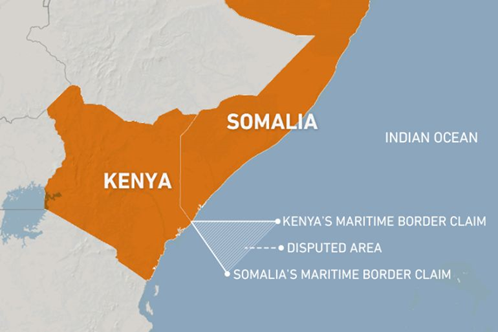Somalia is Divided by Three Ideologies Based on Clan Lines and National Interests of Three Countries

Somalia is Divided by Three Ideologies Based on Clan Lines and National Interests of Three Countries
Since the creation of the former Somali Republic, which united the British and Italian-ruled territories of Northern and Southern Somalia, the country has faced ongoing challenges. Somalia’s current struggles stem from disputes over power-sharing among Northern clans and other Somali clans outside Mogadishu. This imbalance has led to the marginalization of regions outside the capital, Mogadishu, stalling development and economic growth in other areas. This neglect catalyzed the rise of armed movements in the North, East, and Central Somalia, leading to the collapse of the Somali state in 1991. The civil war also severely impacted regions like Bay and Bakool, where approximately half a million people died between 1991 and 1993. Law and order disintegrated, and millions were displaced, facing persecution from opposing clans.
The three conflicting ideologies in Somalia today are as follows:
- Unitary System Advocates
Led by current President Hassan Sheikh Mohamoud and former President Mohamed Abdullahi Farmajo, this faction believes in a centralized unitary system, where Somalia is governed from a single power center in Mogadishu. This view is popular among people in the Eastern, Central, and Southern regions but is opposed by many in Puntland and Somaliland, who see this as unrepresentative and unsuitable for their regions. - Federalism Advocates
Regions like Puntland, Central Somalia, and Jubaland in Kismayo support a federal system of government. They view federalism as a way to share power more equitably and secure development and representation at the national level. Somalia’s current government structure operates as the Federal Government of Somalia, which these regions endorse. However, this system creates a fragmented governance model, with each region maintaining some level of autonomy rather than having a unified national government. - Secessionists in Somaliland
The third ideology comes from Somaliland in the North, which was previously under British rule. Somaliland seeks full independence from Somalia, viewing itself as a separate state and rejecting unification with Somalia. Somaliland has functioned with its own government for over 31 years, reaching a level of stability and self-governance that has attracted international attention. This has led to strategic partnerships, like the recent agreement with Ethiopia in early 2024, demonstrating Somaliland’s growing significance in regional and global geopolitics.
External Influences Complicating Somalia’s Path to Stability
The Somali conflict has also been exacerbated by the interests of Egypt, Djibouti, and Eritrea. These nations are perceived to be part of Somalia’s destabilization over the past 32 years:
- Egypt is suspected of leveraging Somali instability to secure its interests regarding the Nile River. Egypt may view the conflicts involving Ethiopia, Somalia, and Somaliland’s autonomy as advantageous if it can’t reach a favorable agreement on Nile waters with Ethiopia. This underscores Egypt’s strategic concerns in the region.
- Djibouti aims to keep Somalia and Somaliland divided, as a stable and prosperous Somalia could overshadow Djibouti’s own development. Djibouti recently expressed discontent with Somaliland’s Memorandum of Understanding (MOU) with Ethiopia, which resulted in Djibouti initiating new hostilities under President Ismail Omar Guelleh’s leadership.
- Eritrea’s growing influence and development could further complicate matters, especially if regional alliances shift in its favor, creating future challenges for Somalia and neighboring countries.
The Path to Resolution
Addressing Somalia’s deep-rooted issues may require an impartial external power to mediate and uphold regional justice. Alternatively, establishing ideological fairness and allowing the regions to determine their future governance could bring stability. The situation remains complex and increasingly difficult to resolve without external intervention or a significant shift in regional dynamics.


